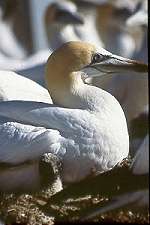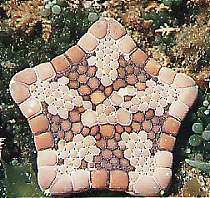
Gannet
|
Genetic diversity refers to the variation of genes within a species. The human species makes a wonderful starting point for a discussion of genetic variability and a typical Australian classroom is a great place to commence.
In a class of around 30 students you would expect to find a wide variety of body shapes and sizes, eye colour, hair colour and skin colour. Carrying out a survey of this variability within a class, or perhaps even a whole school, would be one way to introduce the topic of genetic diversity.
The same variability of things such as shape and colour is exhibited in many marine species.
The Vast Genetic Library
The underlying cause of this variability within species is to be found in the variety of genes that control each feature an individual organism displays. The value and importance of this genetic variability is best expressed in the following quotation: |
Biodiversity is like a library. The species are the books and they contain vast amounts of genetic information. Libraries are useful because their books contain information that may be of immediate use, important in the future or simply contribute to the cultural wellbeing of society.
But in the biodiversity library, vast quantities of books are hidden, others are in storage waiting to be catalogued, while only a small proportion have been read.
From Australia's Biodiversity Living Wealth Andrew Beattie, Reed Books, Sydney, 1995.
Studying Sea Stars
|
The marine environment offers many examples of genetic variation within a species and a few of these are relatively easily accessible to school teachers and students. In particular, intertidal areas of rocky shores in Australia's south and coral reefs in the north provide access to marine invertebrates in sufficient numbers to allow for simple recording of variability within a species.
The southern biscuit star Tosia australis shown right is one example. Found on southern Australian shores this attractive little sea star is common enough for you and your students to observe the considerable genetic variability that this species shows through variability of both colour and pattern.
Another common southern Australian sea star that shows significant variability in colour and pattern is the spurred sea star Patiriella calcar. Although this sea star normally has eight arms, it may also show variation in shape with either seven or nine arms also being quite common. |

Southern biscuit star Tosia australis |
To find your own examples of marine organisms with which to work, you should visit a suitable local shore at low tide and use a marine life guide to help with the naming of species.
Safety Issues
Naturally, when carrying out field work teachers should take appropriate safety procedures as outlined in most good marine life guides and briefly discussed in the Marine Biodiversity Activities section. |